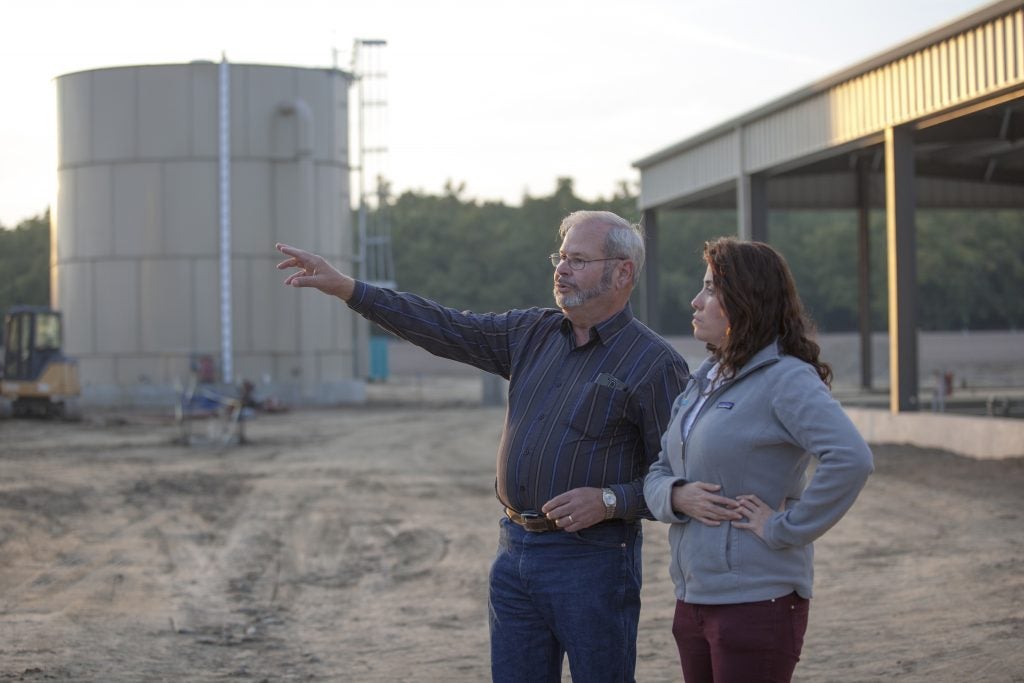Enough with the delays. Here’s why California’s rural communities need safe drinking water now.
Jim Maciel knows about the challenges of providing safe and affordable drinking in California all too well.
His experience serving as director of a small water district highlights why state legislators’ approval of $140 million in new annual funding to provide safe, affordable water to all Californians is long overdue.
Jim is one of about 37 water leaders who I have had the privilege of meeting through the Leadership Institute, a training program created by Rural Community Assistance Corporation and expanded by Environmental Defense Fund and Self Help Enterprises. Many of these leaders are stewards of small community water systems, which serve 10,000 or fewer customers. Their small size is a big part of their challenge.

No economies of scale
In 2017, about 300 public water systems in California failed to comply with federal drinking water standards, according to a state water board report. Ninety percent of those violations were in systems that served communities with less than 500 service connections. (A service connection is the point of connection between the customer’s piping or constructed conveyance and the water system’s meter. One service connection could serve multiple people, for example a family of five.)
These communities have trouble affording new plants to treat contamination because they lack the economies of scale of larger water districts, which can spread costs among thousands more customers.
Maciel has served 14 years as an elected board member of the Armona Community Services District, which covers only 4 square miles. “It’s got a lot of very poor, underprivileged people living here, working to do the best we can,” he says.
Yet they pay among the highest utility bills in the state: $94 per month for water, sewer, garbage and streetlights.
During the drought, one of Armona’s groundwater wells fractured because years of pumping in the area caused the ground to shift. The cost to fix it: $340,000. The district’s other well has gone out of compliance with arsenic standards twice as standards and water conditions have changed, first requiring an investment of about $2 million to comply and then $9 million to build a new treatment plant, completed less than two years ago.
The district has only 1,150 customers to share these costs. For the $9 million treatment plant, that amounts to $7,826 per household.
Funding annual operations
After building a new plant, communities then need to cover the ongoing, annual costs to operate those plants – another factor that contributes to Armona’s high utility bills. These costs could include salaries for new engineering staff, for instance. California was the first state in our nation to recognize the fundamental human right to water through legislation in 2012. It’s unacceptable that nearly 1 million Californians still do not have safe, affordable drinking water. Share on X
However, nearly all state and federal drinking water funding sources currently prohibit using that funding for long-term operation and maintenance costs. An analysis commissioned by the Water Foundation pegged this additional need at $100 million year in California.
A drop in the bucket
After failing to pass legislation last year, state lawmakers this year are debating the best way to raise $140 million annually to cover both operating and capital costs to finally provide safe water to all Californians. Gov. Gavin Newsom has said safe, affordable drinking water is a top priority, giving us more reason for optimism.
AB 217, introduced by Assemblyman Eduardo Garcia, proposes a 50-cent monthly residential water bill fee as well as fees on fertilizer, dairies, feedlots and industrial water users. Low-income customers could get an exemption. A budget proposal by Newsom takes a similar approach, with a slightly higher but still very low monthly residential fee set at 95 cents.
SB 669, sponsored by water utilities, proposes using money from the state’s general fund during a surplus year.
Regardless of funding source, $140 million is a drop in the bucket for a state with the world’s fifth-largest economy and an annual budget of more than $100 billion.
“Leaving no one behind” was the theme of World Water Day earlier this year. California was the first state in our nation to recognize the fundamental human right to water through legislation in 2012. It’s unacceptable that little has changed seven years later. The nearly 1 million Californians without safe, affordable water should not be left behind one more day.











